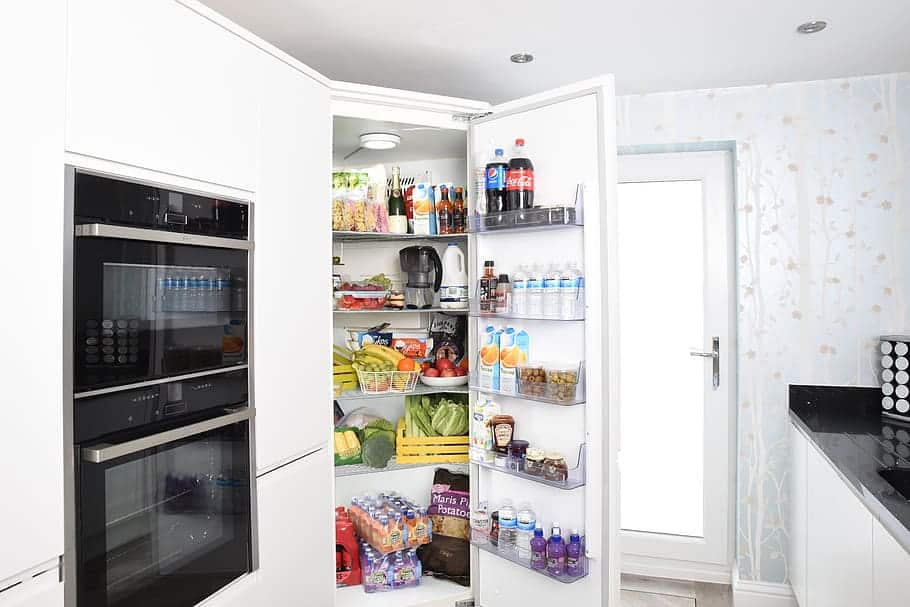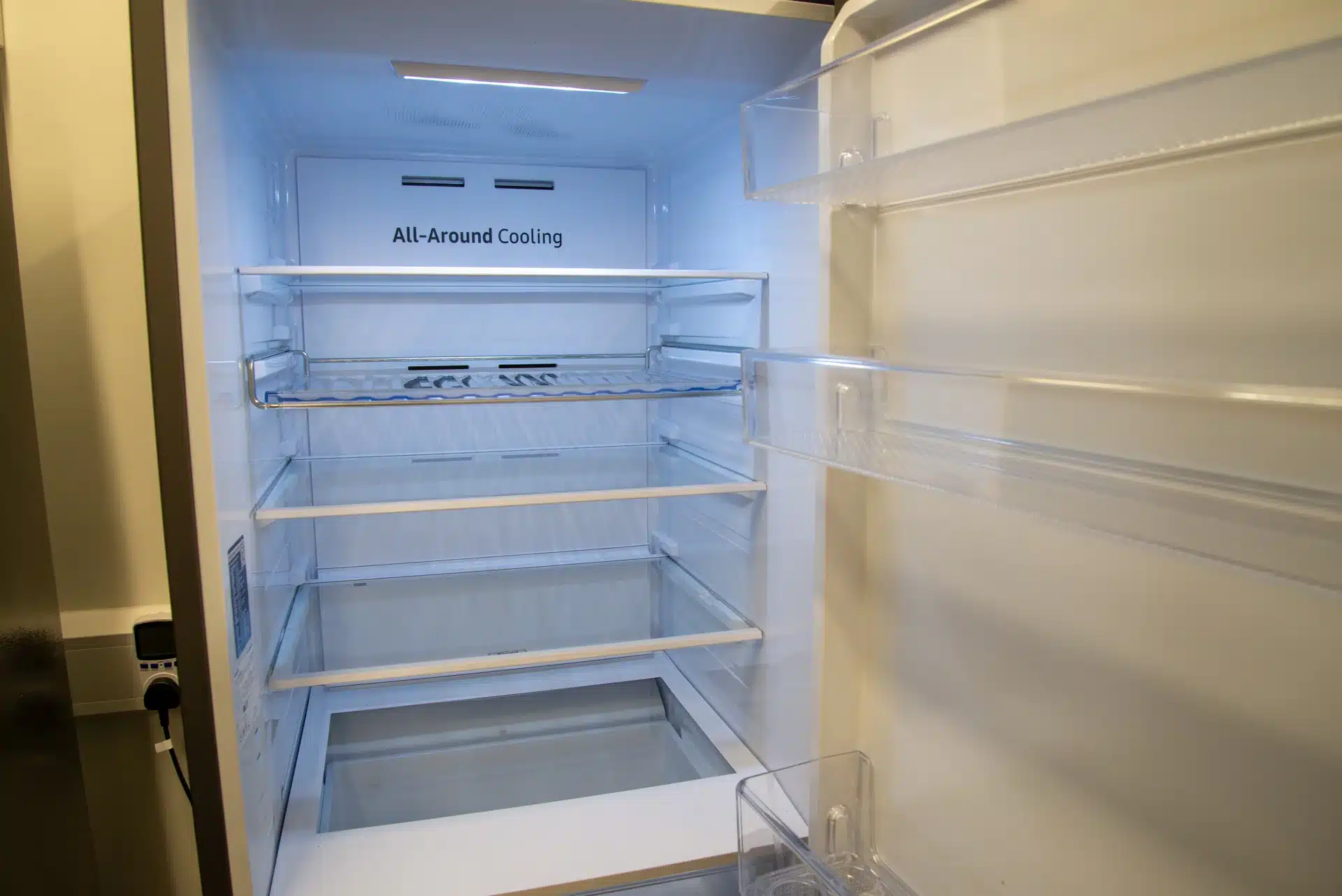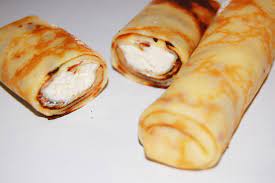Back then, snagging a fridge seemed like hitting the jackpot. Nowadays, it stands as a must-have in every household.
This is why it’s the first appliance you’ve acquired immediately after settling in.
Now that it’s been delivered and you’ve plugged it in, you can’t help but wonder how long it will take to get cold.
How long does it take a fridge a fridge to get cold?
A standard fridge could take twelve hours to cool to the FDA-proposed levels of 40 degrees Fahrenheit.
The hours, however, do not apply to all types of fridges as other factors determine how fast it takes, such as size and brand.
You need to learn how long your type of fridge will take to get cold, given that there could be a prolonged power outage at some point or you shift to a new house.
This means you have to cool the fridge first before storing foodstuffs.
Read on and learn how long your fridge would take to get cold and the factors influencing the speed at which it cools off.

How Long Does it Take a New Fridge to Get Cold?
You’re happy they delivered it on time, but you can’t wait for it to get cold because you have foodstuffs waiting to be stored.
One key determinant of how fast the fridge gets cold is the type; here’s a breakdown of how long it will take the different types:
| Fridge | Time in Hours |
| Standard | 4-24 |
| Freezer | 12-24 |
| mini fridge | 4 |
These figures are ranges, and different brands behave differently.
Some will have you waiting an entire day before they cool off, while some get cold sooner.
Luckily, if you have some foodstuffs that need storing soon before they go bad, there are some tips you can apply to have the fridge get cold sooner.
Tips to Speed up Your Fridge Cooling Process
You don’t have to lose foodstuffs due to the fridge chilling slowly.
Implement these tips and hasten the process:
Avoid Opening Doors
Once you plug in the fridge, avoid the temptation to open the doors often.
Be patient and allow it to chill uninterrupted.
For instance, if it’s a standard refrigerator, wait four hours before opening.
When you frequently open the doors, you disrupt the cooling process, and the fridge retracts after losing the cold air.
What you can do is, space the intervals that you open the doors.
You could allow five hours to pass before you open the fridge, after which you open it again after the seventh hour.
That way, the interruption is minimal, and the process will be quicker.
Put Ice in Freezer
Your ice maker will come in handy in hastening the fridge cooling process.
Get your ice ready and fill it up in the freezer; your fridge will take less time to get cold.
The ice in the freezer aids in activating the cooling process of the fridge.
The ice provides an enabling environment for the entire fridge to chill faster.
Choose an Ideal Location for Your Fridge
If you want the refrigerator to take less time to get cold, have it in a free location with proper air circulation.
Fridges produce heat when functioning; you want to have the fridge not leaning on the wall as this will mean the hot air is blocked and stays within the fridge longer.
Avoid that by having the fridge standing freely, not leaning on any surface.
That way, you’ll have reduced the time it takes for the fridge to get cold.
Don’t Put Hot Foodstuffs in the Fridge
Allow the food you want to preserve in the fridge to cool off before you can put it in the fridge.
If you put hot food in the fridge before it gets cold, the hot air from the food will interfere with the cooling process and take longer than it could have taken if the food was cold.

How to Know if the Fridge is Cold Enough for Use
After you have plugged in the fridge, you need to know what to look out for to indicate it’s now cold enough to function.
A fridge is cold enough if it reaches the FDA-approved level of 40 degrees Fahrenheit.
Harmful microorganisms can’t grow at that level, and your foodstuffs will be fresh and fit for consumption.
Some fridges come fitted with thermometers; all you have to do is identify their location and take the reading after the first four hours.
Keep reading after four hours until you get the ideal cold temperatures.
If your fridge doesn’t have the in-built thermometer, get one from the store and place it in a glass of water.
Place it in the middle compartment and allow it to rest for around six hours or more before you read to get the accurate temperatures.
Alternatively, get an appliances thermometer and keep it in the fridge at all times;
That way, you can tell whether the fridge is cold enough whenever you wish to verify.
Factors that Affect How Long It Takes for a Fridge to Get Cold
Before you keep checking on your watch, wondering how many more hours have to pass for the fridge to get cold, here are some factors to have in mind as they will influence the duration it’ll take:
Condition
Assume there was a power outage; once it resumes the condition and functionality of your fridge will affect how long it will take before it gets cold again.
If the fridge is faulty, it will take longer to get cold.
For instance, if the fridge doors are not closing properly or the thermostat is faulty, the air circulation in the refrigerator is compromised and thus will take longer to cool off.
Room Temperature
If the room you have the fridge is cool with low temperatures, the fridge will cool down faster compared to rooms with warmer temperatures.
Most new fridges come with a manual that guides on the ideal room temperature that it needs to function properly.
Having your fridge in a warm room will make it harder to balance the temperatures between the outer environment and the inside.
This means it uses more energy and will take longer to get cold.
Stock
If your fridge is new and you are getting it cold for the first time, then you need to do it when empty so it can get the systems running.
Have it stocked when you need to get the fridge cold after a power outage that didn’t last long.
This allows minimal warm temperatures within the fridge, meaning it gets cooler faster.
Power
Having the right voltage will influence how first the fridge gets cold.
If the fridge is barely straining due to low voltage, it will take longer to cool off and pose a hazard.
Get a separate plug dedicated fully for the fridge with enough voltage.
That way, the fridge will run efficiently and cool off in good time.
Size
There’s an unwritten rule in the fridge world that suggests smaller refrigerators take less time to get cold while bigger fridges take longer.
Here’s a breakdown of the common fridge sizes and the time it takes for them to get cold:
| Fridge Size | Time it takes to get cold |
| 1-4 cubic feet | 3-4 hours |
| 5-28 cubic feet | 4-24 hours |
The time it takes for the different sizes depends on the specific brand.
Some may take less time to cool off despite their size, given the built-in internal modifications.
Age
Older fridges tend to take longer before cooling off, the reason being some of the parts could be slow or malfunctioning.
For instance, if the coils are dirty and clogged, it will take longer to get the fridge cold.
How Long Does it Take a New Refrigerator to Get Cold Enough to Use
Once you buy a new refrigerator, before you even plug it in, allow it to sit for approximately three hours to allow the compressor oil to settle.
After plugging the refrigerator, give it time between four and eight hours before you can stock your foodstuffs.
The time varies from brand to brand; however, avoid opening the refrigerator four hours after plugging it in.
Take the temperatures before you can use the refrigerator.
Ensure the temperature is 40 degrees Fahrenheit or below.
The freezer should be at zero degrees to be cold enough to use.
What Would Make a Fridge Take Longer to Get Cold?
Most new fridges have a manual stipulating how long it will take to get cold.
The Salesman will also guide you on how long it will take.
If there was a power outage or you just shifted and want to get the
fridge cold enough to use, and it’s taking longer than anticipated;
Here are the possible causes:
Poor air circulation
Defective setup of the fridge
Low power voltage
Damaged condenser coils
Warm room temperatures.
If the fridge takes more than 24 hours before getting cold, you should
have it checked.
If it’s a new fridge, allow it some more time, up to 48 hours.
Beyond that should prompt you to get in touch with the vendors
when the warranty is still running.
Avoid interfering with the fridge, so the warranty covers it if it’s faulty.
Conclusion
Different fridge brands take varied time frames to get cold.
Be patient to allow your fridge to cool off before you can stock, as it will boost the lifespan of your appliances.
Constantly monitor your fridge’s temperature levels to ensure that the contents are free from harmful microorganisms.
- How To Make Passion Fruit Juice - July 1, 2025
- Sara Lee Pound Cake Recipe - July 1, 2025
- Gordon Ramsay Panna Cotta Recipes - July 1, 2025



